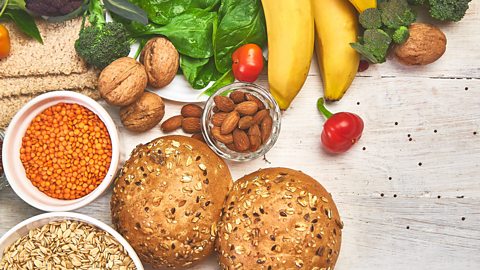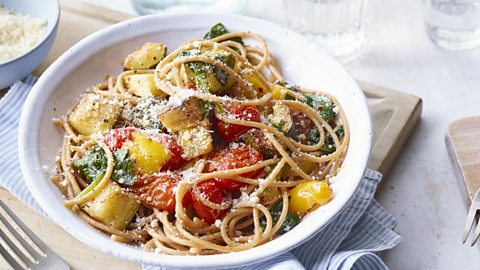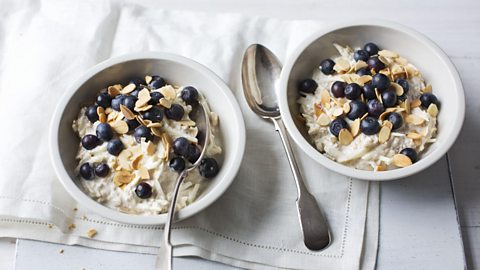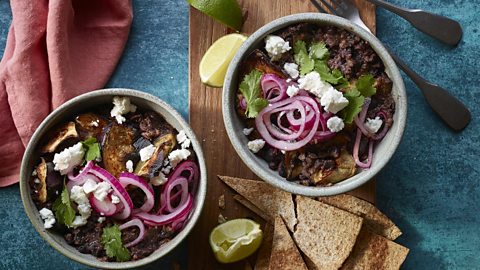How hard is it to consume the recommended amount of fibre every day?
ItвАЩs the nutrient 90% of us arenвАЩt getting enough of вАУ so just how hard is it to consume the recommended amount of fibre? Laura Wingrove monitored her intake as she tried to meet those guidelines.

Fibre is by no means a glamorous nutrient, often associated with foods that have cardboard-like taste and texture, like multigrain crackers. It doesnвАЩt seem to get the same airtime as its more popular cousins, protein and fat. Funnily, there isnвАЩt really a sexy way to sell regular bowel movements.
But thereвАЩs so much more to fibre than a happy stomach, explains Dr Hazel Wallace, aka The Food Medic, who has investigated the nutrient and its benefits in depth throughout her career. вАЬIn addition to keeping our digestive system healthy and preventing constipation, a high-fibre diet is associated with reducing the risk of heart disease and stroke, type 2 diabetes and colorectal cancer.вАЭ
Despite its health benefits, 90% of us arenвАЩt getting enough of it. Just 4% of women and 13% of men aged 19вАУ64 consume the daily recommended amount for adults of .
Keen to find out if IвАЩm eating enough, I decided to take a magnifying glass to my own diet.
Why I was missing out on fibre
вАЬFibreвАЩs really not that hard to find, once we know where to look for it,вАЭ explains Wallace. вАЬItвАЩs in all forms of plant foods вАУ fruits, vegetables, wholegrains, beans and pulses, nuts and seeds вАУ plus tinned, fresh and frozen all count.вАЭ
As an example, one apple contains 1.2g of fibre, a jacket potato with its skin contains 4.7g and reduced-salt baked beans in tomato sauce have 9.8g of fibre, says .
So, prior to writing my diet down, I was quietly confident I was hitting the 30g a day recommendation. I eat my crusts (and have the curly hair to prove it!), often add green leaves to my plate and am keen on fruit too. While IвАЩm not vegetarian, my diet is vegetarian-centric вАУ not so much due to veggies being more fibre-rich as them being cheaper than meat.
That being said, organisation isnвАЩt my strong suit, meaning some days IвАЩll have a wholesome breakfast (think muesli with yoghurt and berries), and others none at all; at lunch IвАЩm either prepped with something relatively nutritious or I grab something out (usually a cheese toastie or something from the nearest supermarketвАЩs to-go section). My evening meal will be dictated by whatвАЩs in the fridge and cupboard, so its health credentials often rely on whether IвАЩve managed to go shopping recently. It might be fish with a big, hearty salad one day, and a quick pasta dish the next.
Quick vegetable pasta
This easy pasta dish uses wholegrain pasta for a fibre boost

I tracked my diet over three typical working days and the results were quite surprising. I found on the days I ate lunch out or skipped breakfast, my diet was high in ultra-processed foods and significantly lower in fibre. On average, I was getting around 13.5g of fibre a day.
Not reaching your fibre goals for these reasons is common, says Wallace. вАЬThe typical diet in the UK is heavily reliant (for up to ) on highly processed foods, which typically have low levels of fibre. These foods are more readily available to us, especially when weвАЩre on the go, and often cheaper than wholefoods.
вАЬFood advertising and promotions also tend to be skewed towards processed convenience foods and confectionery compared to fresh fruit and veg.вАЭ
I ask Wallace for advice. What food swaps would help me reach that magic number of grams per day? HereвАЩs what she said.
Go for wholegrains: вАЬIвАЩm sure you know this already, but opting for wholegrain and brown versions of breads, pastas and rice is a simple way to increase fibre without changing the price of your ingredients or the meal very much.вАЭ
Make breakfast count: вАЬStart the day with fibre by choosing an oat-based breakfast such as porridge, muesli or homemade granola, or wholegrain breakfast cereal. If you have no time for breakfast, grab a banana, some rye crackers and peanut butter вАУ and youвАЩre good to go.вАЭ
Overnight oats
Not only does this breakfast dish contain oats, it also includes blueberries and apple вАУ both of which are good sources of fibre

DonвАЩt focus on removing things from your diet: вАЬThink about how you can add to your meal вАУ not take away from it вАУ by incorporating flaxseed, mixed seeds or a handful of nuts into your breakfast or lunchtime salad.вАЭ
Snack wisely: вАЬAt snack time, choose a high-fibre snack like oat cakes or apple topped with hummus or peanut butter.вАЭ
Embrace veggie substitutes: вАЬIf youвАЩre a meat eater, swap half of your minced meat dishes вАУ think lasagne and cottage pie вАУ for lentils or even walnuts, pulsed in the food processor. This works particularly well for bolognese.вАЭ
Pretty simple take-homes. But what would be even easier is if I could just take a fibre supplement instead. Wallace advises against that, though.
вАЬSupplements canвАЩt replace the benefits of consuming food in its natural form, because not only are you getting the fibre but youвАЩre also getting the other important vitamins and minerals found in the food. Only in very specific cases would I recommend a supplement.вАЭ
With no quick-fix option, I spend three days altering my diet following WallaceвАЩs advice.
The plan to increase my fibre intake
I start each day with wholegrains for breakfast. To stop the temptation of ultra-processed foods, I prep lunch in advance and make sure I have all the ingredients in my cupboard for planned-ahead dinners. I thought doing this would take loads of time but, in reality, it was a really quick job each day. It was enjoyable too: finding different recipes to try out that were both fibre rich and fitted with my tastes had me experimenting with new dishes and mixing up mealtimes.
Aubergine and black bean bowl
This recipe includes black beans, which are packed with fibre

Having planned ahead, cooking was stress free, and taking the time to have breakfast every day meant that I wasnвАЩt desperately throwing food together for lunch without considering how good it was for me. I found the food I ate far more interesting and delicious when I gave it proper thought and, given that vegetables are often such good sources of fibre, I wasnвАЩt spending any more money than I usually would, either.
| Breakfast | Lunch | Dinner | Snack | Total fibre | |
|---|---|---|---|---|---|
| Day one | Overnight oats with chia seeds and blueberries | Sweet potato with mixed beans, yoghurt and tahini | Frying pan chicken shawarma with lentil salad | Apple | 36g |
| Day two | Air fryer blueberry oats | Courgette fritter, salad and feta | Aubergine and black bean bowl | Chocolate raisins, apple | 44.63g |
| Day three | Wholegrain toast with boiled egg | Roasted veggie and tinned tuna bowl | Air fryer falafel with wholegrain flatbread and veggies | None | 34.18g |
The results
ItвАЩs difficult to see any long-term benefit in three days, but I did notice a few immediate effects: I was more вАШregularвАЩ, for starters. It also felt like my energy levels had lifted. Naturally, foods higher in fibre вАУ I felt fuller for longer and didnвАЩt experience any afternoon crashes (not skipping breakfast probably had an impact here, in and of itself). This improved energy benefited my fitness routine too: unsurprisingly, fuelling up properly is great for exercise.
What surprised me the most over the three days was that I felt as though my sleep improved and I was better rested each morning. I had a quick read to see if there was any evidence behind this and although very limited, there does seem to be that suggests consuming a high-fibre diet, such as the Mediterranean diet, can lead to better sleep quality.
Those benefits are more than enough to make me focus more on fibre in the future. Still, a healthy diet needs to fit around me and my lifestyle. So, while IвАЩll make an effort to have overnight oats waiting for me in the morning and try to spend 20 minutes each week menu planning, I wonвАЩt be swapping all my pasta to brown, nor will I realistically remember to bring my lunch to work every day. But I wonвАЩt be disheartened if there are a few lower fibre days every now and then: IвАЩm not aiming for perfection, just better balance.
Originally published September 2023